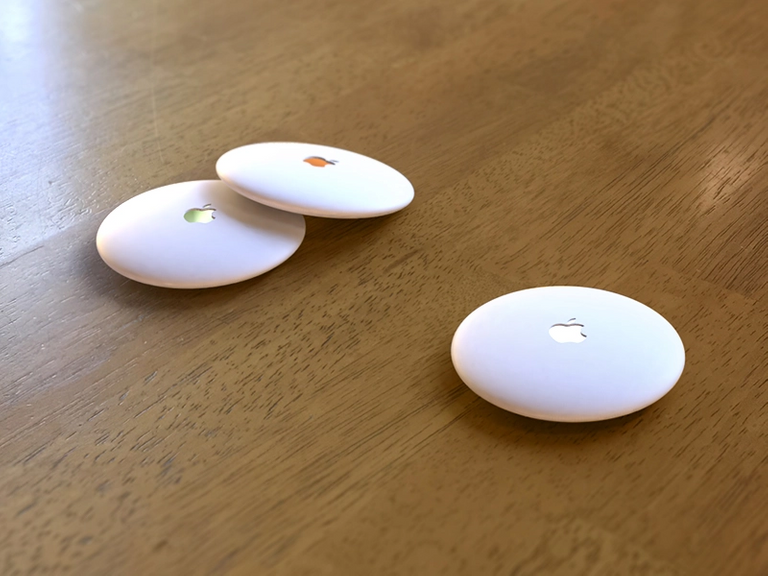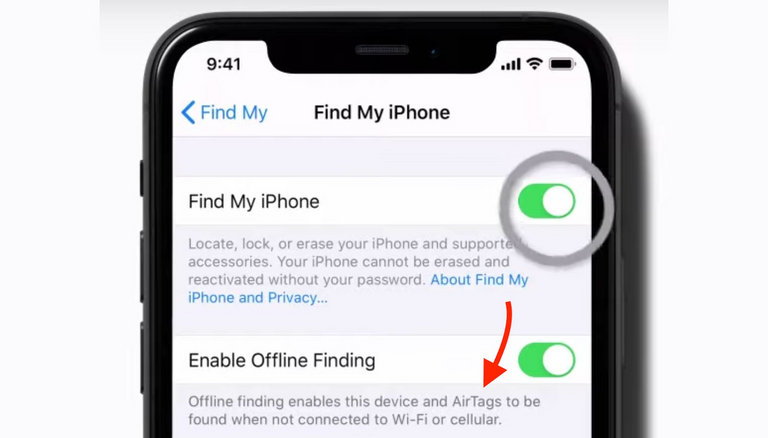AirTags: how Apple will succeed where everyone else has failed

(image source: MacRumors)
Based on assets found around late 2019 in iOS 13.2 and trademarking details, Apple seems to be planning to release a new tracking accessory called "AirTag". These are small devices, also known as tracking tiles, that feature wireless connectivity and can be put inside or attached to objects, to find lost items.
Tags cannot broadcast their position as they have no GPS (which would require too much energy), so they rely on beaconing their presence via low power wireless (Bluetooth LE and similar) broadcasting a unique ID, which is specific to each tag, to any nearby device.
Tracking tags are not a new concept, and some of the most popular brands have been on the market for quite a while: among them, it is worth mentioning Tile, Chipolo, and Orbit.
How do tracking tags work
The concept is fairly simple, and its logic is the same for all vendors: each tracking tag has a built-in wireless chip (usually Bluetooth) that allows them to communicate with a mobile device to relay its location. The mobile device must run an app which is developed by the tag vendor; whenever a tag is close, its chip will beacon a unique ID number to the mobile device, which will identify it as "nearby Bluetooth device"; the app, constantly running in the background, will then log the tag ID and relay it, together with the GPS location of the mobile device, to its central server.
The tag beacon combined with mobile GPS location allows the tags vendor to relay the location of any tag that is "seen" in the proximity of any mobile device that is running their app, which in turn allows the tag vendor to create and update a location map of all the tags.
How tags can help retrieving lost items
In general, one would place tags on personal items - be it tucked inside pockets, or with a sticker, or sewn in; then, a tag would just sit there undisturbed.
The simplest thing tags can do to retrieve an item is to trigger, within proximity, a sound alarm; the tag will beep to help to find something that has been misplaced, such as a remote control sunk behind a couch pillow, or a wallet which has been accidentally dropped under a table. This action usually happens within a few meters of distance and allows direct activation of the tag.
Another way tags can help is to retrieving lost items, such as a kid dropping his favorite plush while walking with parents on their way home. In this case, the app will log the time and location when the tag (tucked inside the stuffed animal) has lost connection with the phone; the plush then could be retrieved by simply walking back to that exact point.
There is also another, more powerful method that tags can offer, based on location crowdsourcing. If one item was lost or stolen, it would also be sitting around or passing in the proximity of several dozens if not hundreds of mobile devices - as mobile devices are ubiquitous - which can potentially pick up the tag beacon and broadcast its location and movements across time. This would allow the owner, who meanwhile will have marked the item as lost and therefore required the app to return the location of the corresponding tag, to track its location and possibly retrieve it.
Some tile vendors have also built additional smart logic in their system, which triggers a proactive notification to the user if an item has suddenly fallen out of range (and therefore it appears it has been forgotten or lost). This can be useful for special items that are never supposed to be left behind, such as wallets and keys.
Why tags are not really effective
Following the description above, there are some obvious shortcomings in the design logic.
Tracking tags, as a concept, are derived from the manufacturing industry where a lot of items location and displacement must be tracked accurately and in a timely fashion for storage and distribution purposes. Many iterations of industrial tags rely on RFID. This concept works well in a closed environment, such as storage facilities where machines and operators are all equipped with tag readers and the environment has well-defined boundaries.
As an extension of the same concept, if these items are to be shipped, it is possible to track them with extreme precision by using tag readers on each waypoint until their final destination. A familiar variant is used by airlines and airports, which apply barcodes to identify and route luggage and cargo items, which are scanned from check-in to destination. These methods work because the tracking process is controlled end-to-end.
RFID however does not work well in domestic environments, where Bluetooth is more suitable as (among other things) it allows bidirectional communication. For this reason, in their early days, consumer tracking tags were designed just to retrieve objects within the limited range offered by Bluetooth (25 meters) and for this reason, they work reasonably well within a household; for these scenarios, a mobile app is not even necessary, as it does not require more than a "Bluetooth remote" to make a tag ring and reveal its location.
The mobile app enables additional use cases, such as tracking an item back to its last known location (when it lost connection to the phone).
The real benefit of finding lost items with tracking tags, however, fully depends on a critical assumption:
a dedicated app running on a mobile device has to be installed and permanently enabled to listen to any given tag beacon signal. The mobile device would append the required location data to the unique ID, providing geo-location, and upload the result to a central server. The aggregated anonymous data would then allow a service central (managed by the tag vendor) to log the position of any tag (by its ID) across time.
The effectiveness of this design to locate and retrieve items depends strictly on the granularity of the detection device, which means any brand of tag would need a lot of mobile phones running their dedicated app to have a chance at picking up the signal of a lost item across the world. If not many phones had that app, there would be no way to locate the tags as there is not enough coverage across the country.
Tracking tags are proprietary and not interoperable, therefore their apps do not aggregately beacon signals and will only work with their tag.
The effectiveness of any tracking tag outside a 25-meter radius depends on how many mobile phones have a specific app installed, configured, and running. In other words, if something falls outside your phone range there are very few chances of retrieving it at all.
That is a very strong assumption and it is limiting the value and usefulness of the entire product.
For this reason, despite being far from a novelty, the tracking tags market has been mostly populated with products that launched, captured some success based on the effectiveness of their marketing, and then quickly faded away as soon as the users found out they would not meet the expectations.

Why will Apple succeed where everyone else has failed
In simple words: because there are iPhones and iPad everywhere, and Apple can embed tracking directly inside the operating system of all their mobile devices.
Also, AirTags are rumored to use more than plain Bluetooth, possibly integrating ultra-wideband in their custom chip.
By embedding tag detection in iOS and using a combination of ultra-wideband and Bluetooth, Apple can turn all its devices across the world into a giant detection network for AirTags overnight. The sheer number of active iOS devices would make this system immensely effective at locating the tags, overcoming in one fell swoop the main issue that prevented all previous attempts to work.
When will AirTags become available?
It is not known at the moment when AirTags will be released to the general public. However, patent application numbers 20200333421 and 20200337162 that are concerning them were filed back by Apple in Q3 2019, and the actual product name has been inadvertently leaked by Apple in a support video uploaded to YouTube in April 2020 (and since then removed). In the video, it is possible to see a dedicated switch to enable offline device finding and the reference to AirTags tracking devices.

In a research note, famous analyst Ming-Chi Kuo said he expects Apple's partners to ramp up production of the trackers in the second or third quarter of 2020, and Nikkei Asian Review claimed that production of AirTags had started at the beginning of September 2020.
While no mention of AirTags has been made in the Apple event of November 2020, if those sources are correct it may not be long before AirTags become available to the general public.
Congratulations @lucabarbera! You have completed the following achievement on the Hive blockchain and have been rewarded with new badge(s) :
You can view your badges on your board and compare yourself to others in the Ranking
If you no longer want to receive notifications, reply to this comment with the word
STOPDo not miss the last post from @hivebuzz: